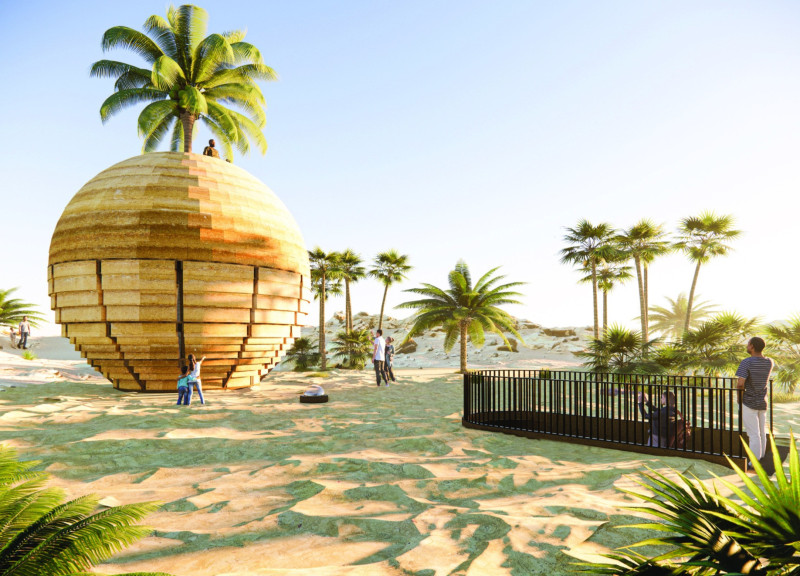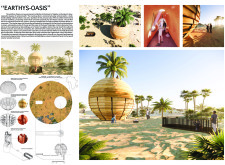5 key facts about this project
The Earthys-Oasis Pavilion is a thoughtfully designed architectural project located in the Agafay Desert near Marrakech, Morocco. This pavilion serves as a permanent exhibition space, aimed at celebrating the region's cultural heritage while offering an immersive experience in the unique desert environment. The architecture harmonizes with the landscape, utilizing traditional building techniques alongside modern design principles.
The pavilion primarily functions as a venue for community events, exhibitions, and educational programs that highlight both local culture and sustainable practices. It emphasizes the relationship between built structures and their natural surroundings, promoting environmental awareness and community engagement.
Unique Architectural Approaches
One of the distinctive features of the Earthys-Oasis Pavilion is its use of rammed earth. This ancient building technique not only enhances the building's thermal performance but also respects the historical context of Moroccan architecture. The material's sustainability and low environmental impact are significant considerations, as they align with contemporary architectural practices that prioritize eco-friendly solutions.
The design incorporates a circular form that reflects architectural elements found in nature. This decision not only minimizes wind resistance but also fosters a sense of inclusivity and connectivity. The pavilion's terraces create a layered façade, drawing parallels to traditional agricultural practices in the region.
Natural elements play a crucial role in the design. Large openings strategically placed throughout the pavilion facilitate natural light and airflow, reducing reliance on mechanical systems. A palm tree is positioned centrally, growing through an opening in the roof, symbolizing life in the desert and enhancing the interior ambiance. This integration of nature into the structure exemplifies a modern approach to architecture that considers ecological systems within urban design.
Interior Design and Spatial Layout
The interior layout promotes fluid movement and interaction among visitors. Curvilinear spaces allow for varied exhibition designs, while the soft earthen tones of the rammed earth walls provide a warm atmosphere. The use of glass in specific locations permits visual connections with the exterior environment, framing the serene desert landscape outside.
Materials such as wood and steel reinforce the pavilion's structural integrity while maintaining aesthetic warmth. Combining these materials with the rammed earth not only reflects traditional craftsmanship but also ensures the building's durability.
The Earthys-Oasis Pavilion serves as a significant architectural intervention in Morocco's desert landscape, blending culture, sustainability, and innovative design practices. To explore the detailed architectural plans, architectural sections, and architectural designs, consider reviewing the visual materials associated with this project for a comprehensive understanding of its offerings and design philosophy.























